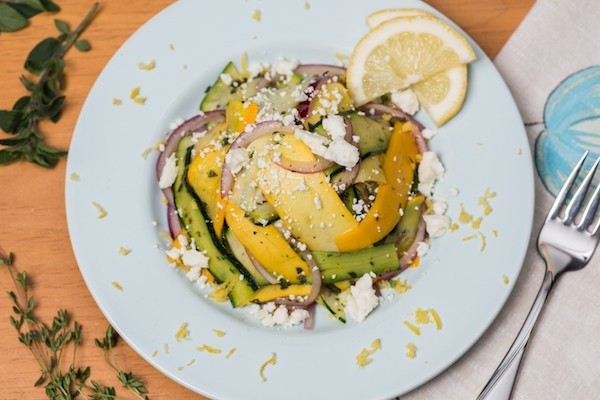Herbs and spices have always been essential to good cooking. They can be used as a healthy substitute for salt, which may be linked to higher risk for stomach cancer and high blood pressure.
Fresh summer meals can be made even healthier when you add fragrant herbs and spices that help you cool off. Research shows that fragrant green herbs and pungent spices boost good health by substituting for salt and adding natural phytochemicals which may protect against cancer.
For example, oregano contains quercetin, which shows antioxidant properties in lab studies that could help protect cells against damage. Other herbs and spices that may have antioxidant properties include sage, peppermint, cloves, thyme, marjoram and coriander.
Both dried and fresh green herbs contain phytochemicals, although the taste of some herbs may be stronger when they are dried. If you’re using dried herbs, use half as much as fresh versions. Use them as salt substitutes in vinaigrette dressing, roasted vegetables, sauces, soups and eggs. Or add fresh mint or basil to a tall glass of water. Fresh herbs can be stored by wrapping in slightly damp paper towels, placing in a plastic bag and refrigerating for 3-4 days.
Spices such as turmeric – the ingredient that makes curry powder yellow –are being studied for anti-inflammation properties that might help prevent cancer. Sweet spices, like cinnamon, ginger and cloves, may also help prevent cell damage that occurs through oxidation. Fresh ginger is warm and pungent when minced and added to stir-fries or made into tea. Studies are underway testing potential for cinnamon to help people with diabetes or pre-diabetes keep healthy blood sugar levels when part of a healthy diet, but so far results are not consistent.
Using a wide variety of herbs and spices can keep healthy eating delicious so you can stick with healthy, plant-based diet that features mostly whole grains, vegetables, beans and fruit. Browse all our tasty, cancer-fighting recipes.
Summer Squash Ribbons with Lemon Herb Dressing
2 Tbsp. extra virgin olive oil
2 tsp. fresh lemon juice 1 tsp. lemon zest scraped from outer peel
2 tsp. coarsely chopped fresh oregano leaves (or 1 tsp. dried)
2 tsp. chopped fresh thyme (or 1 tsp. dried)
Pinch salt and freshly ground black pepper 1/2 small red onion, thinly sliced
1 medium yellow summer squash or zucchini
In large bowl, whisk together first 5 ingredients. Season to taste with salt and pepper. Stir in onion and set aside.
Cut ¼-inch from base of squash (opposite stem end) to make it flat. Place flat cut end on cutting board and hold stem end. With vegetable peeler, shave squash lengthwise to create ribbons. Stop peeling at seed core. Rotate to shave opposite side, then cut seeds from remaining 2 sides and thinly slice remaining squash. Cut slices of squash in half crosswise. Add to bowl and gently toss to cover with dressing. Chill until ready to serve. Top with feta, if desired, before serving.
Makes 4 servings. Yield 4 1/2 cups.
Per Serving: 82 calories, 7 g total fat (1 g saturated fat), 5 g carbohydrate, 1 g protein, 2 g dietary fiber, 7 mg sodium.






